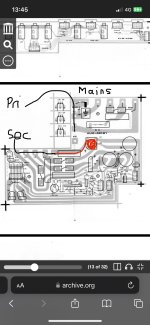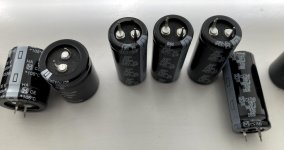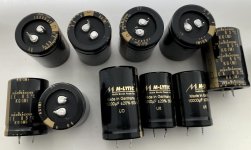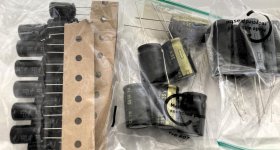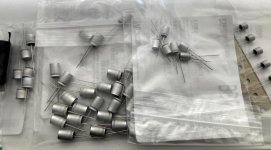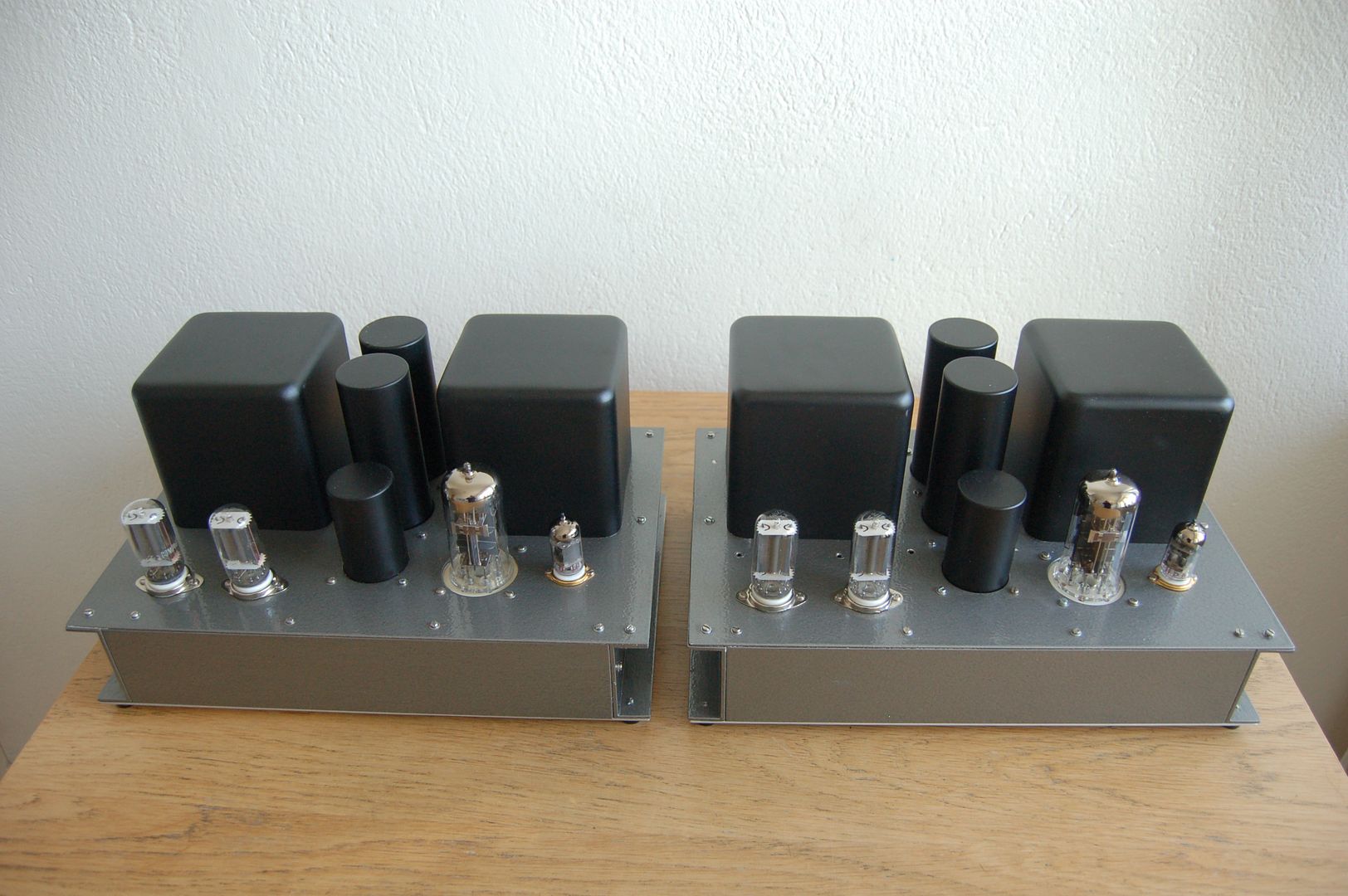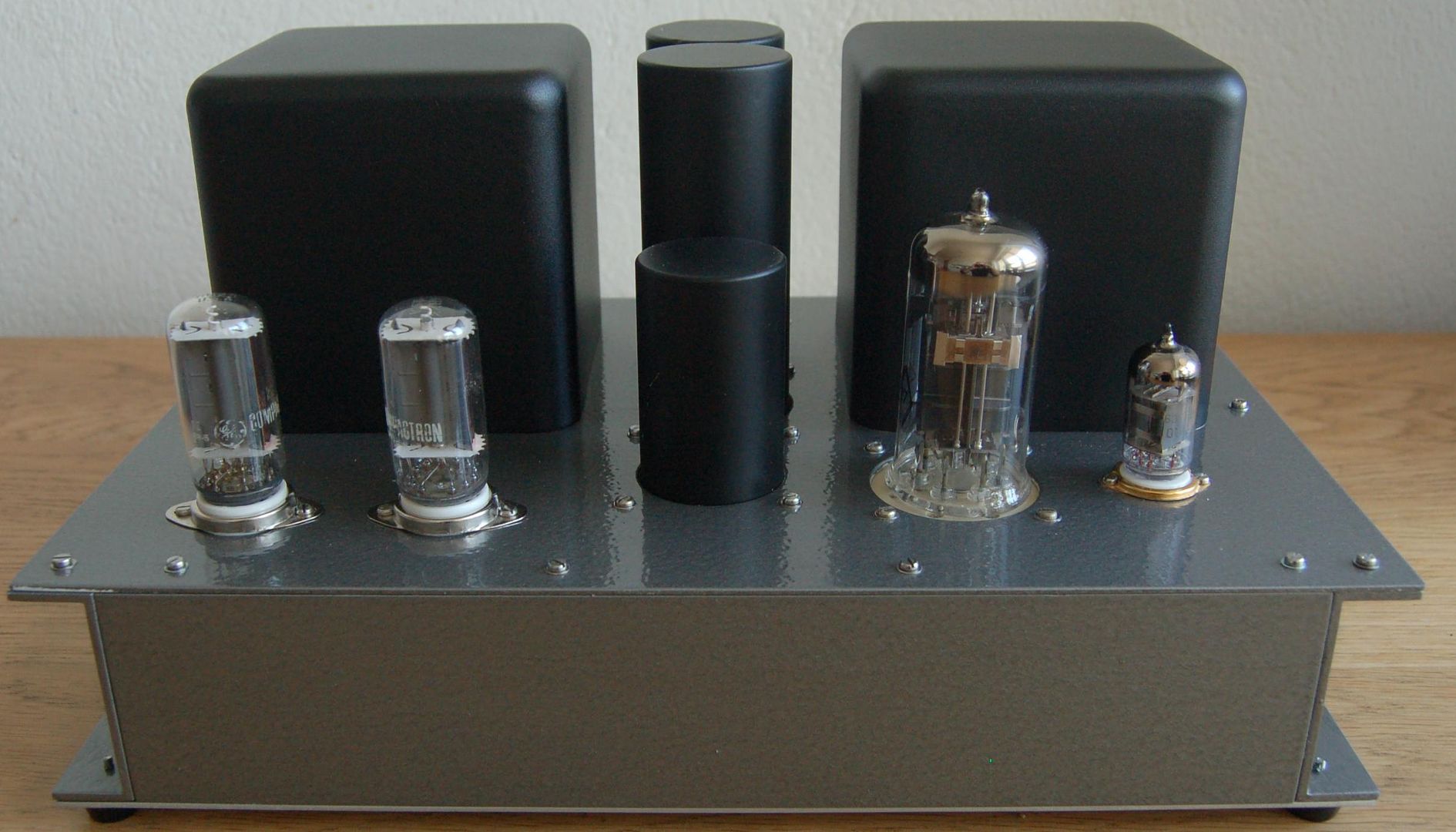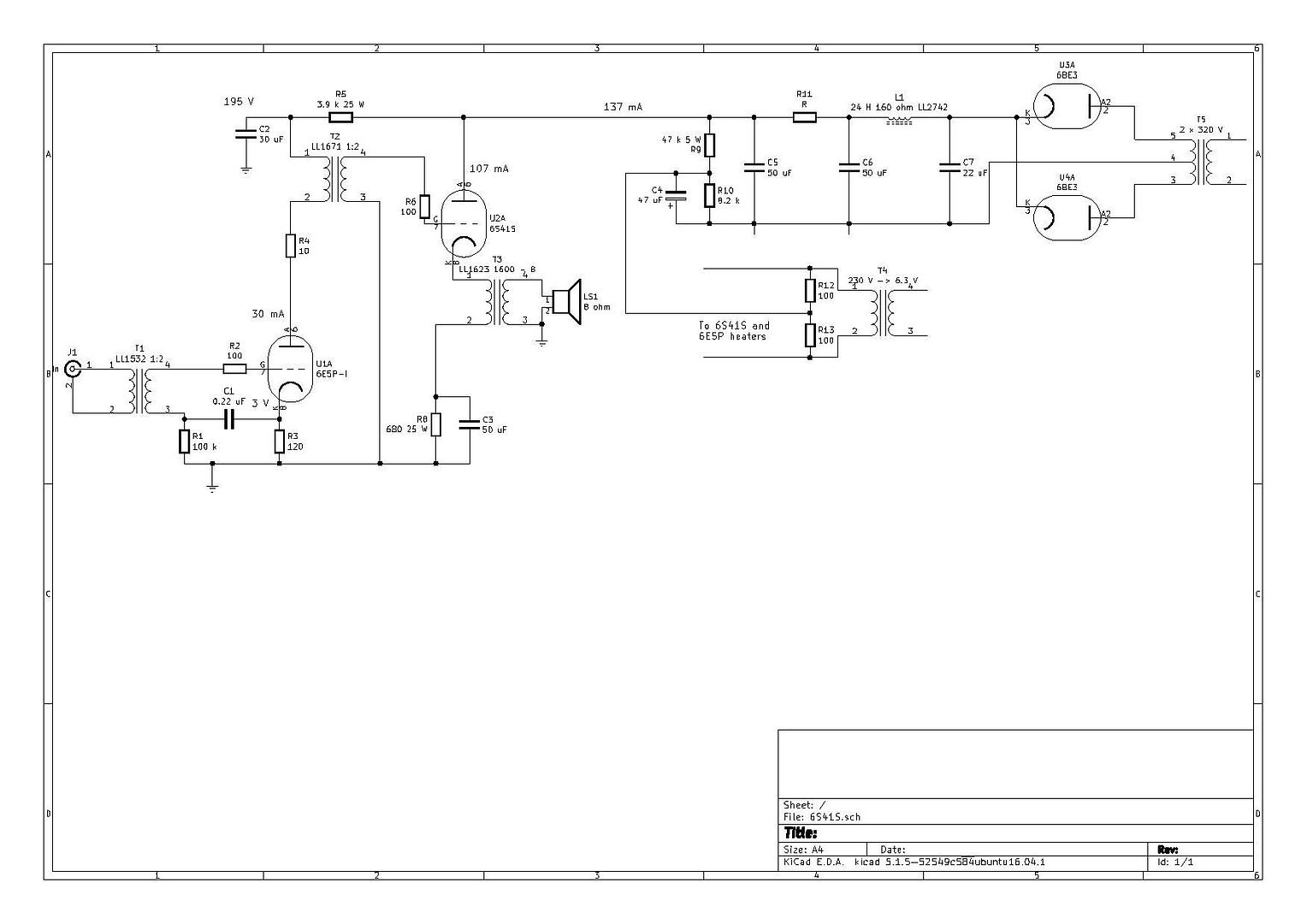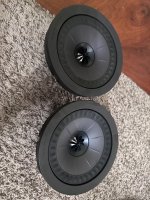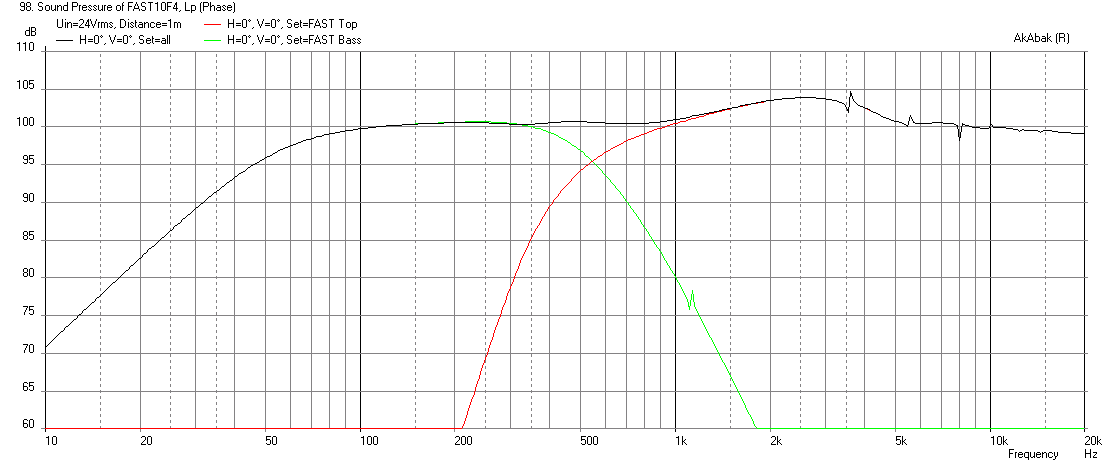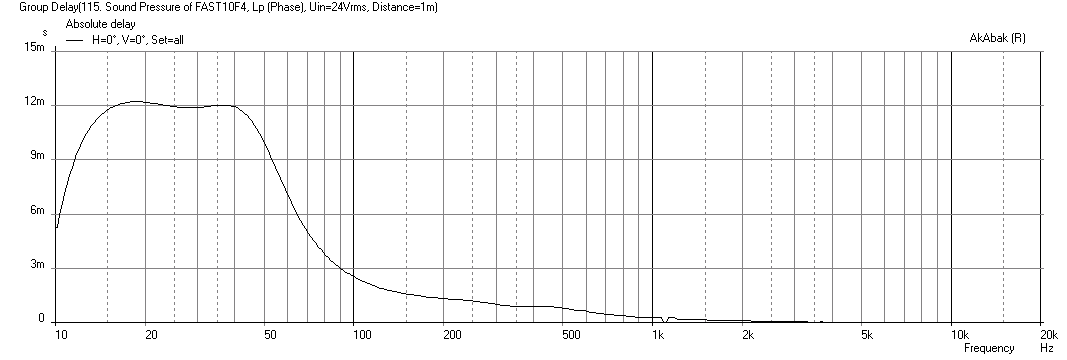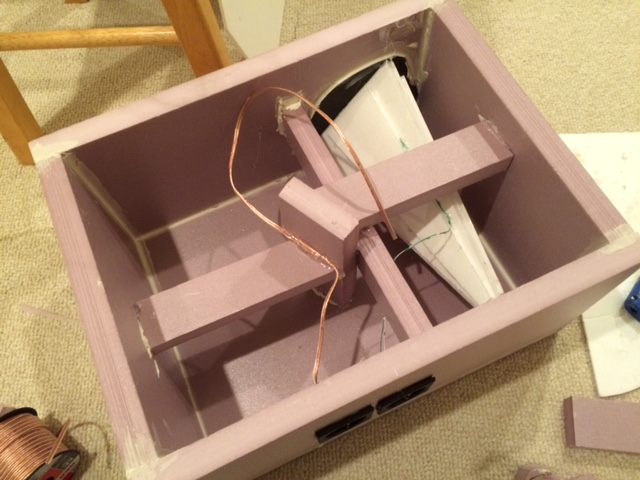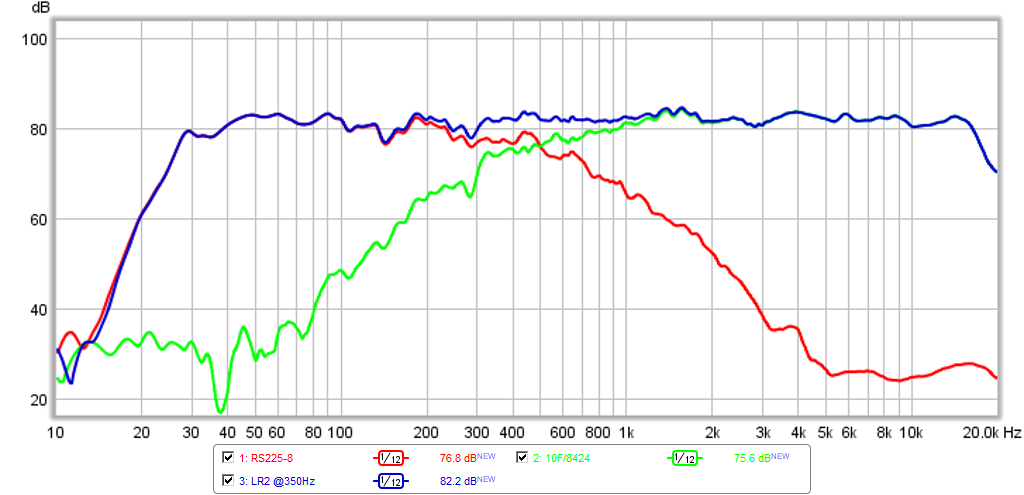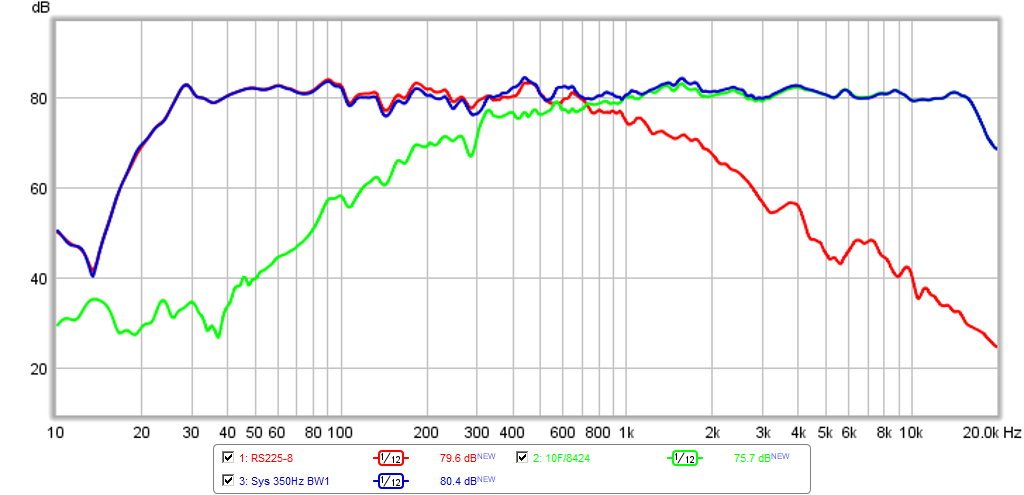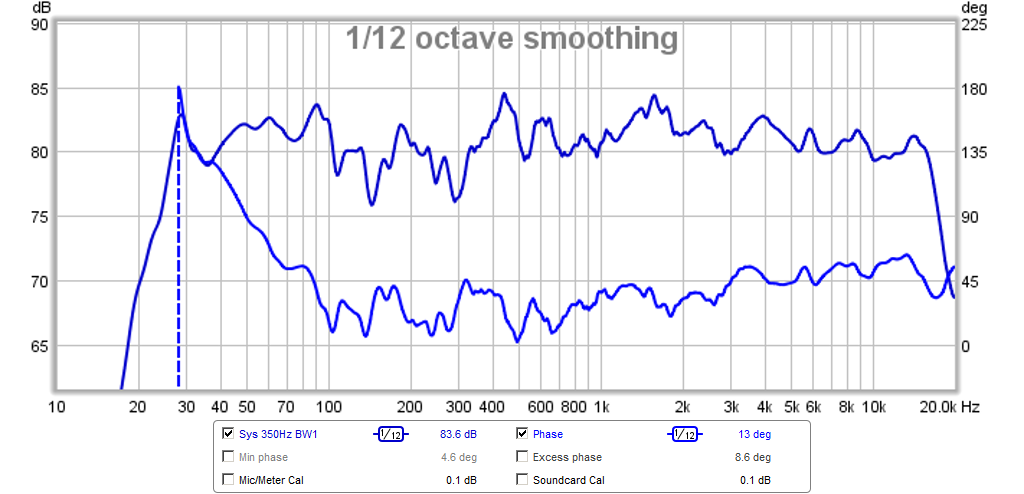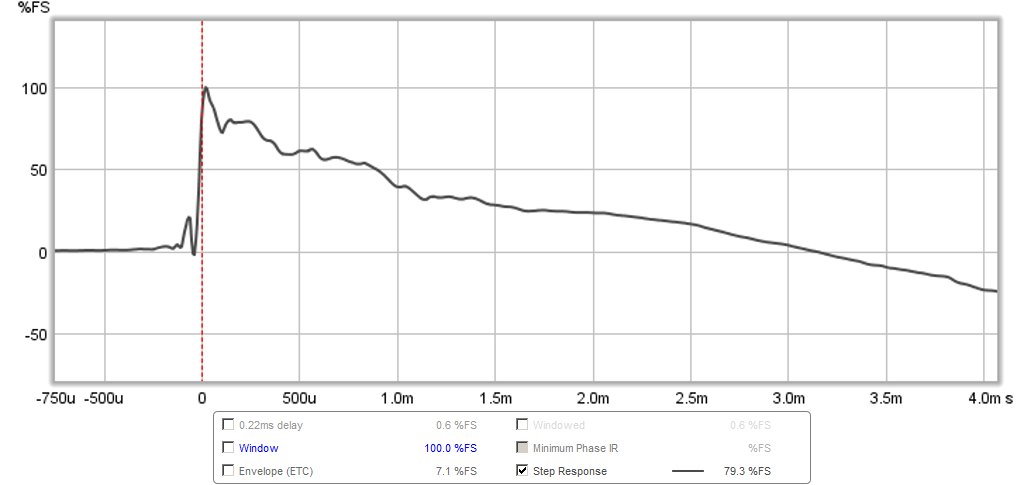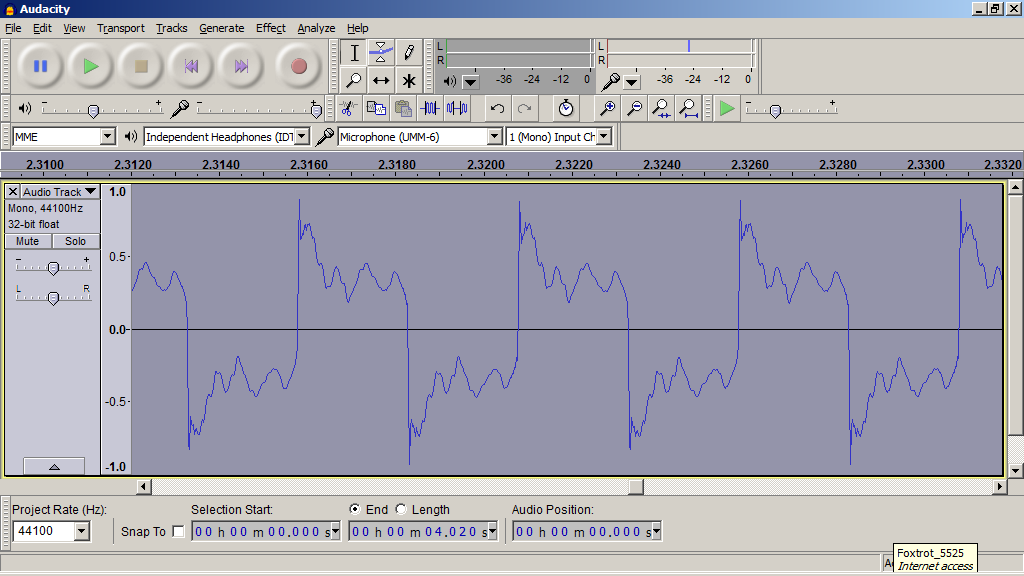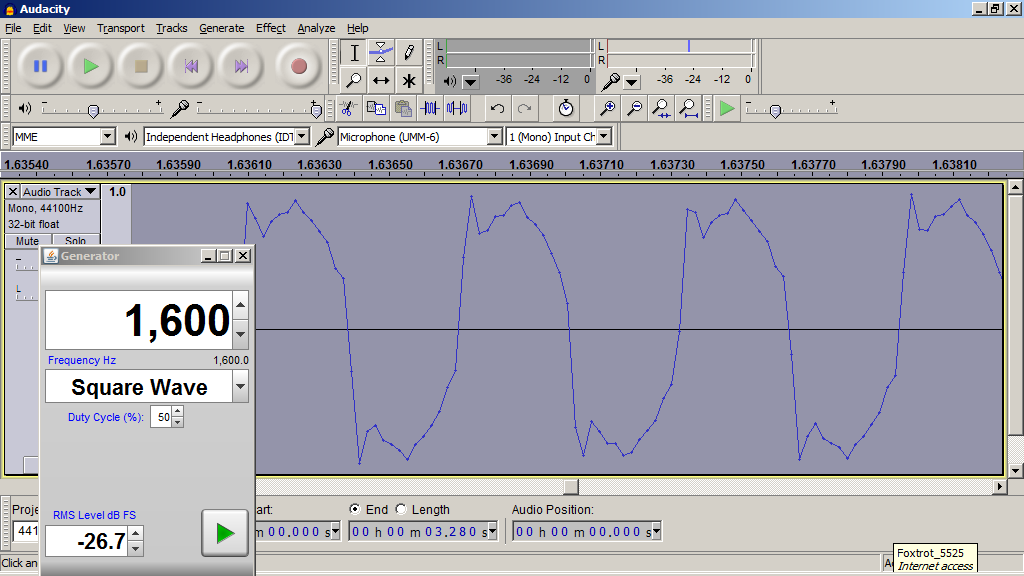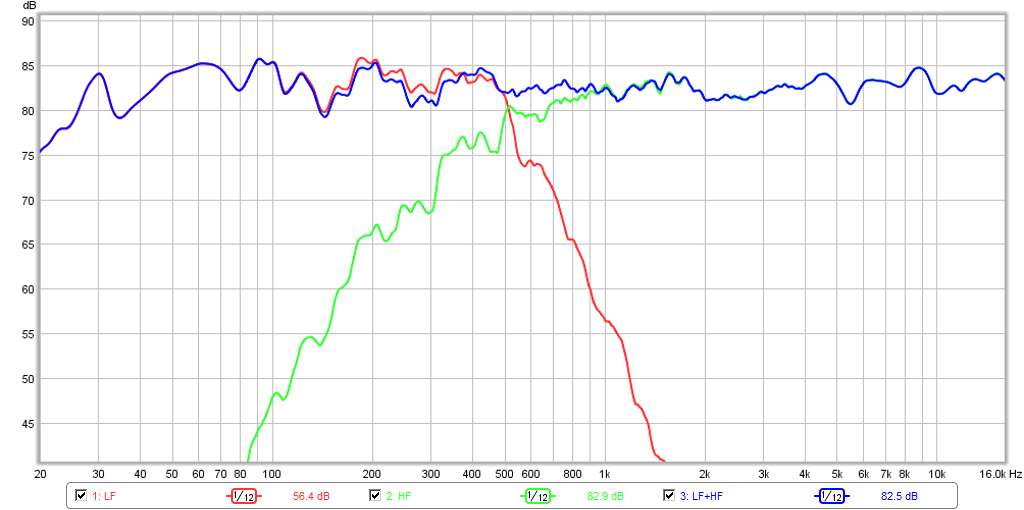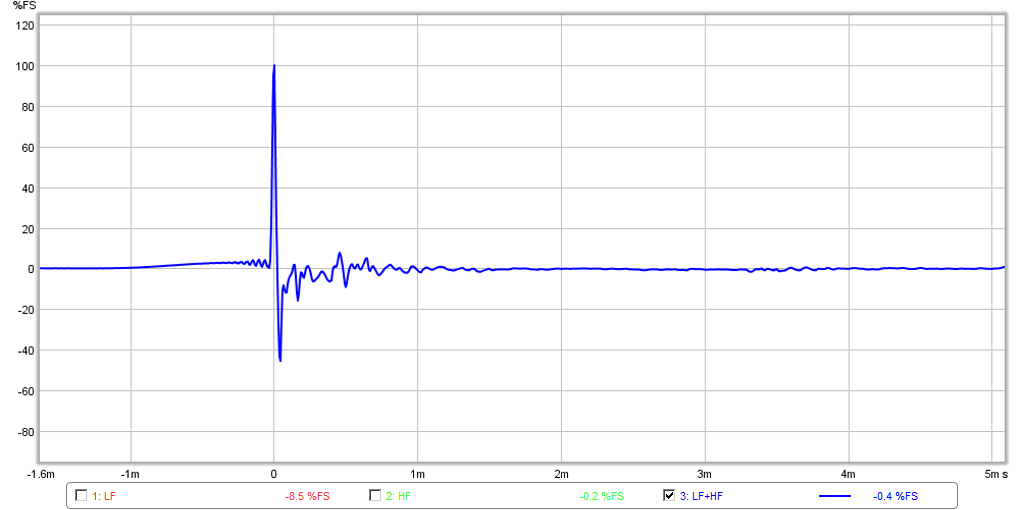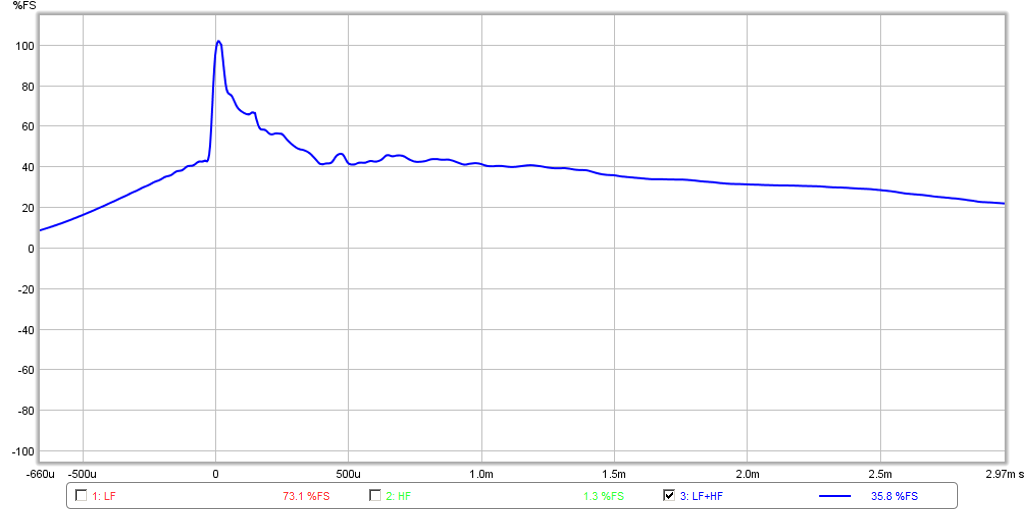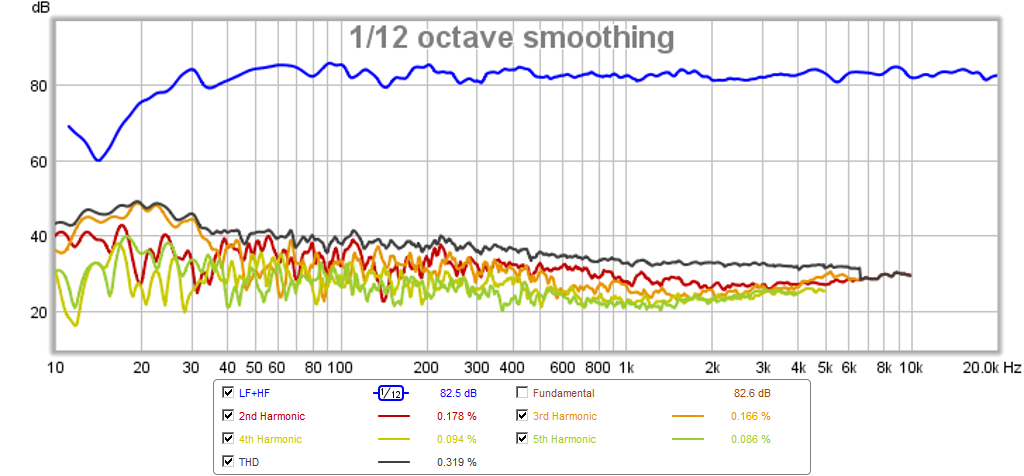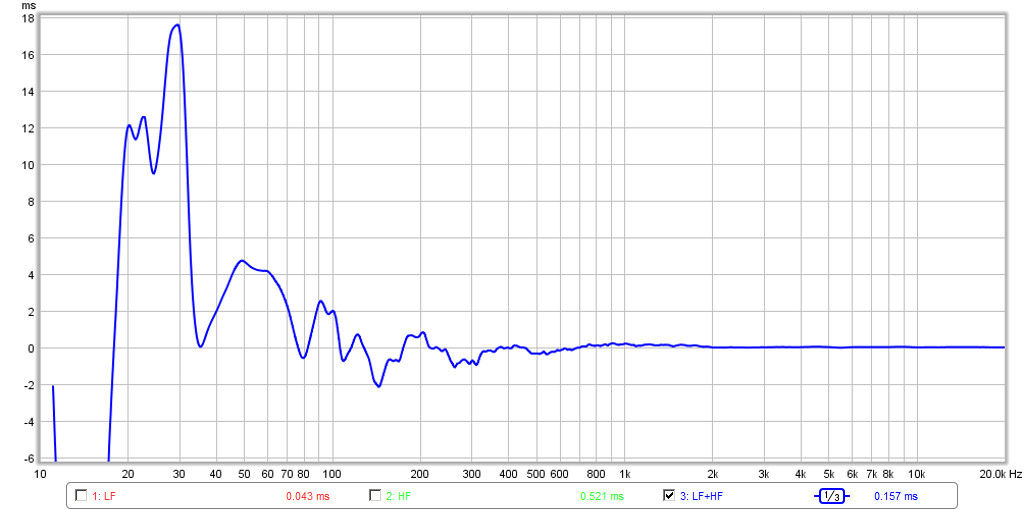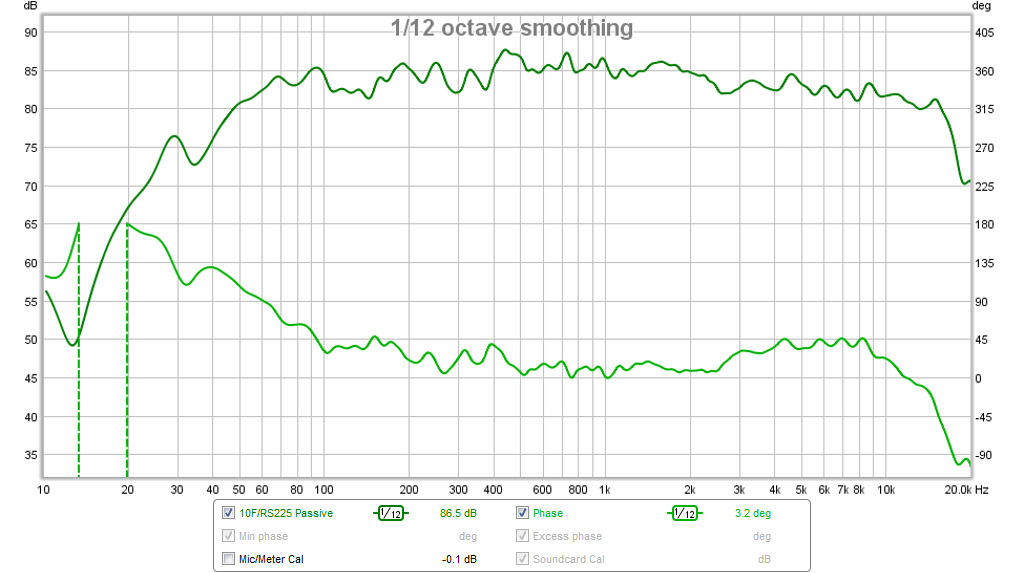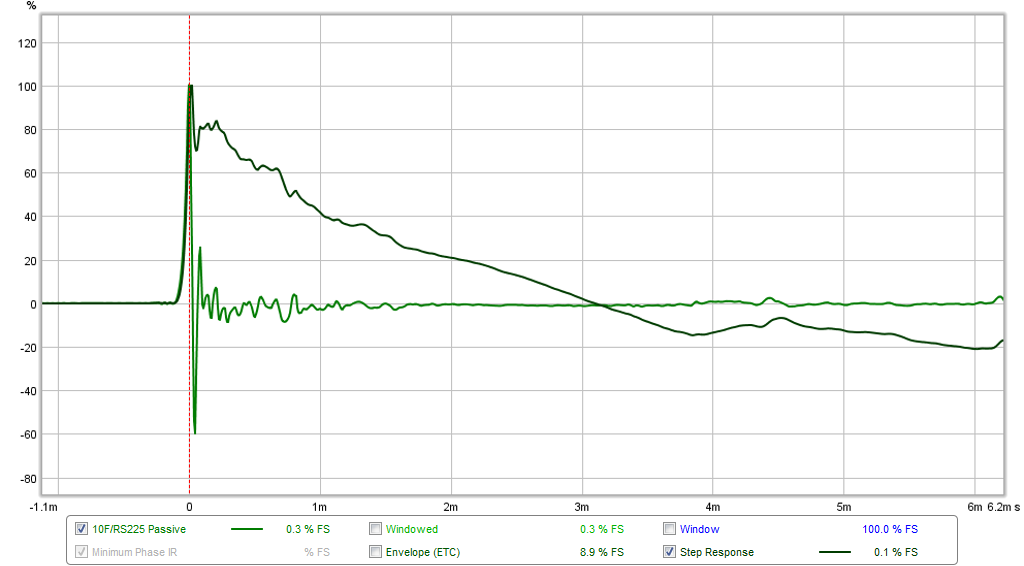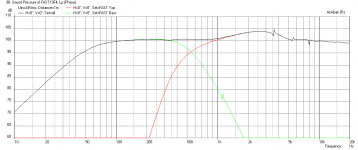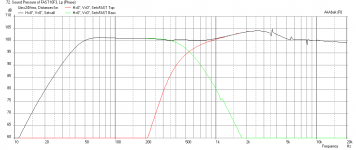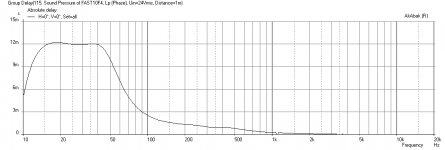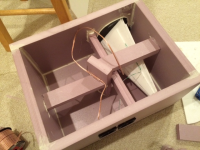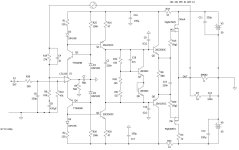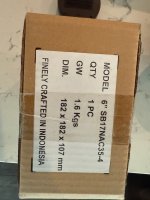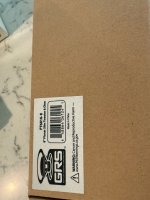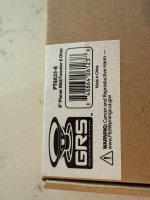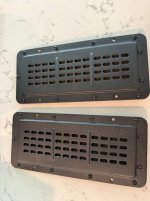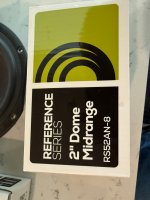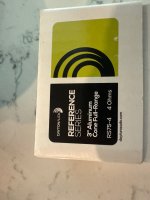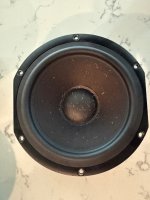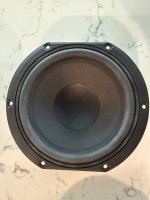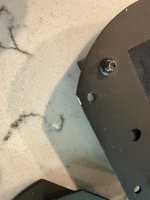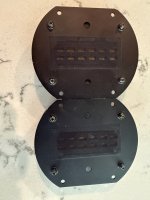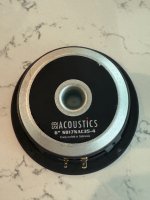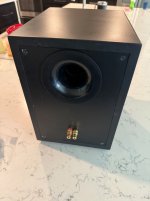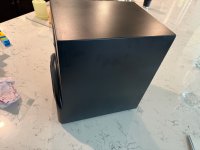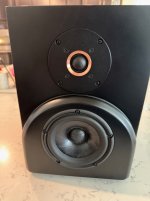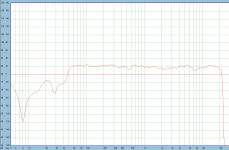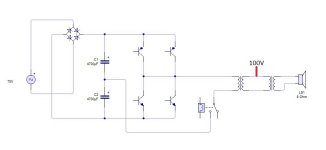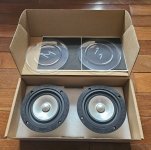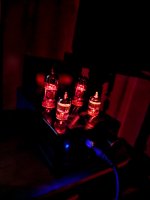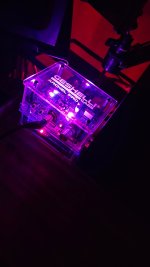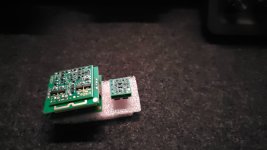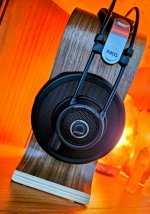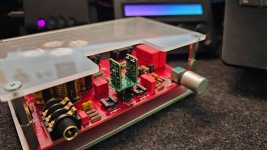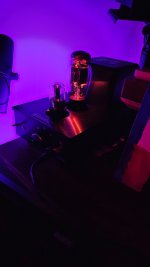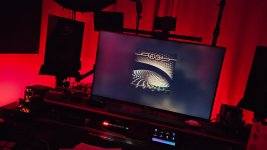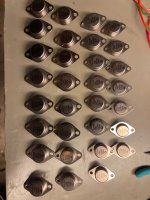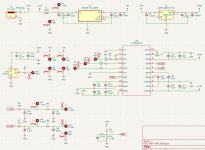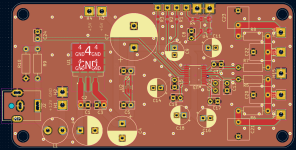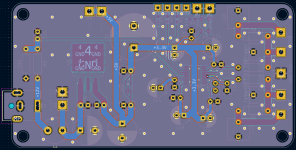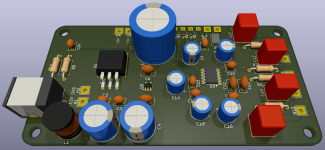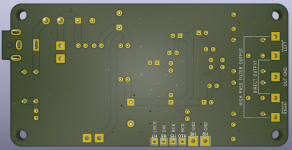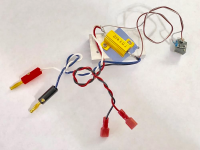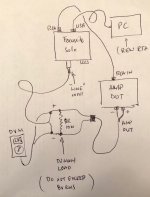Hi all,
Attached is a preliminary schematic of a return-to-zero FIRDAC I intend to build. No idea when I will find time to design a PCB, stuff it and debug it, but I'll get there eventually. It will be a DAC that can only handle raw DSD. If it works well I may or may not decide to also make a PCM version that uses an FPGA board to convert PCM to sigma-delta modulates.
The circuit with the stacked dual transistors on page 2 is (or at least should be) a low-noise bandgap reference. I have the concept from D. F. Hilbiber's article in
ISSCC Digest of Technical Papers from 1964, see
https://www.diyaudio.com/community/...ith-ic-voltage-regulators.359652/post-7021353 It should have better noise performance than almost all modern bandgap references, because those almost always amplify a
VBE difference by a large factor instead of stacking
VBE differences. Only half the transistors are needed; I can't predict whether the BCM56DS or the NST45011 stacks will work best and they don't have the same footprints, so I want to reserve space for both.
The reason I can't predict whether the BCM56DS or the NST45011 stacks will work best is lack of information about the base resistance of the BCM56DS. It's a matched pair of medium-power transistors, so chances are that the base resistance is low, but I can't be sure of that. The NST45011 is specified to have a 1 dB typical noise figure at a 1 kohm source resistance when biased at 0.1 mA, which implies a base resistance of about 130 ohm, which is not bad but not very good either. (There are matched transistor arrays from THAT and Analog Devices with good and clear noise specifications, but I find those much too expensive.)
The fifth page has a clock doubler and a return-to-zero circuit, among other things. JohnW doesn't like the RTZ circuit I used in
74AHC02 and 74AHC08 DAC with 97 dB(A) dynamic range because he is afraid that the switching of the flip-flop may disturb the gate output signal when the flip-flop isn't slow enough. To avoid that issue, in this circuit, I split the RTZ logic from the actual DAC.
74LV574A's connected as shift registers on the third and fourth pages are the logic circuits used as DACs, they have low-noise reference supplies that are separate from the RTZ logic supply. As they run on a doubled clock and there are zeros inserted between each pair of data bits, simple shift registers work as RTZ FIRDACs. It's like the DSC2 DACs, but with return to zero. It's a balanced four-tap FIRDAC, balanced to keep the load on the reference supply as data-independent as possible. For matching reasons, I've connected the 74LV574A flip-flops in an ABABABAB style, with a second 74LV574A in BABABABA style.
Regards,
Marcel
Edit, 12 May, 1 October, 14, 15, 22 November 2022, 1 and 12 February, 26 May, 16 July, 1, 3, 6 and 8 August, 17 and 18 September, 15, 17 and 22 October 2023, 6, 10, 21, 29...31 March, 1, 8 and 15 April, 2 and 18 May, 28 July, 26 October, 1 and 7 November, 2, 3 and 9 December 2024 and 9, 11, 15 and 16 January 2025:
See posts #20 and #21 for the version (DAC3_5.pdf) I built and did some measurements on (using NE5532's rather than OPA1678's in the filter because the latter were out of stock), see post #1931, https://www.diyaudio.com/community/threads/return-to-zero-shift-register-firdac.379406/post-7483396 , for the latest BOM and schematics, and see post #241 https://www.diyaudio.com/community/threads/return-to-zero-shift-register-firdac.379406/post-7175580 and its links for the latest layouts. The latest schematic versions are DAC3_10_holdtimefix.pdf and DAC3filter_6.pdf. Versions 9 and 10 of the DAC layout (with or without hold time fix - the fix only consists of four resistors with updated values) are meant for 0.21 mm PR7628 prepreg, the earlier versions for 0.36 mm. See post #272 https://www.diyaudio.com/community/threads/return-to-zero-shift-register-firdac.379406/post-7182183 for the (old-fashioned) KiCad files.
I corrected the literature reference in this opening post.
Measurements:
The most relevant measurements are in posts #35, #60 (noise floor), #75, #79, #88 and #764 (distortion and noise floor driven from an Amanero),
https://www.diyaudio.com/community/threads/return-to-zero-shift-register-firdac.379406/post-7403333 The measurements of post #764 were done by Hans Polak. Some measurements by bohrok2610 on a variant of the DAC can be found in post #955,
https://www.diyaudio.com/community/threads/return-to-zero-shift-register-firdac.379406/post-7417293 and post #1090,
https://www.diyaudio.com/community/threads/return-to-zero-shift-register-firdac.379406/post-7419240 , and an overview of measured noise floors in post #1092,
https://www.diyaudio.com/community/threads/return-to-zero-shift-register-firdac.379406/post-7419247 It seems that the noise floor is quite sensitive to far-off phase noise and spurious tones on the clock. Later measurements by bohrok2610 on his variant with an improved board layout can be found in post #1928 and a few posts below it,
https://www.diyaudio.com/community/threads/return-to-zero-shift-register-firdac.379406/post-7481890
See also bohrok2610's measurements on low-signal-level distortion and 10 kHz distortion starting at post #2467,
https://www.diyaudio.com/community/threads/return-to-zero-shift-register-firdac.379406/post-7635702
For comparison, using the same sigma-delta modulator, the DSC 2.5.2 has low-level distortion with a similar looking spectrum, but about 20 dB worse, see
https://www.diyaudio.com/community/threads/simple-dsd-modulator-for-dsc2.370177/post-7407497
On the other hand, ska managed to make a DAC with a similar spectrum but about 20 dB lower distortion products, apparently using a very simplistic approach. The sigma-delta modulator design is different, so the difference might be due to the DAC itself or due to a different dithering scheme in the sigma-delta modulator or both. The information about ska's design and layout is sparse, but there is some information spread out over posts #3834, #3837, #3844, #3847, #3850, #3851, #3863, #3865 and #3887. See also ska's thread about the same DAC, but with a better sigma-delta modulator,
https://www.diyaudio.com/community/threads/discrete-fpga-dac-project.407618/
The
measured noise of the bandgap reference with BCM56DS is smaller than the
calculated noise with the NST45011, so the BCM's are the winner. Hence, in version DAC3_9, the NST45011's have been removed.
Hold time fix:
Measurements from Markw4 showed that the delay of U22, U24, U26 and U27 was only 1.7 ns, shorter than the anticipated typical delay and quite close to the 1.5 ns minimum hold time required by the SN74LV574As. Reasons may be the fact that I designed the circuit using TI data but switched to Nexperia for U22...U27 because the TI parts were not available, and that U22...U27 see a smaller capacitive load than the 50 pF used for the datasheet measurements. To fix this, R124, R127, R129 and R131 have been increased from 39 ohm to 270 ohm.
The prototype is fully functional with the original 39 ohm, with 270 ohm and even with 560 ohm. This last value is not recommended because it could lead to set-up time issues, I just tried it as an experiment. The noise floor with 270 ohm resistors is in post #1927,
https://www.diyaudio.com/community/threads/return-to-zero-shift-register-firdac.379406/post-7481723
Supply currents:
The measured supply currents of the prototype at 27 Mbit/s are in post #88,
https://www.diyaudio.com/community/threads/return-to-zero-shift-register-firdac.379406/post-6999623 Add 50 % to have some margin for exemplaric spread.
Supply sequencing:
There are some supply sequencing requirements, fortunately ones that can easily be met. Again see post #88,
https://www.diyaudio.com/community/threads/return-to-zero-shift-register-firdac.379406/post-6999623 , for details.
Alternatives to components:
The TQ2-12V relays can be directly replaced by Zettler AZ850-12 relays, which are sold by Conrad (among others).
The latest filter design has NE5532's instead of OPA1678's in the second and third stages of its schematic, because the prototype also used NE5532's. Both should work, as the filter was originally designed for OPA1678's.
The OPA210 and OPA2210 could be replaced with OPA209 and OPA2209, respectively. They are very similar, although some specs of the OPA209 and OPA2209 are slightly worse. If neither OPA2210 nor OPA2209 is available, OPA1602 should also be usable as an alternative.
Header length:
The headers connecting the filter PCB to the main PCB have to be relatively long because of the height of the capacitors used in the reference buffers. I hope the ones suggested in the latest BOM are the right size, I guess they are as I didn't get any complaints.
Skipping the last filter stage if DC offset doesn't matter:
You can skip the last filter stage if some DC offset is acceptable, for example because the offset is blocked somewhere further down the signal chain. On the filter board, you can then skip U
6 and U
13 with the surrounding components and connect the outputs of U
5 and U
12 straight to the 49.9 ohm resistors. Ray (nautibuoy) made filter boards without the last stage, see posts from #647,
https://www.diyaudio.com/community/threads/return-to-zero-shift-register-firdac.379406/post-7365893
Output signal level:
A 0 dB DSD sine wave produces a differential output voltage of about 2 V RMS.
.dsf test files:
See post #762,
https://www.diyaudio.com/community/threads/return-to-zero-shift-register-firdac.379406/post-7403044 , for .dsf files with repetitive silent patterns, these can be useful for measuring just the analogue circuit noise (without the effects of the ultrasonic quantization noise). See post #2610,
https://www.diyaudio.com/community/threads/return-to-zero-shift-register-firdac.379406/post-7643831 , for a Pascal program that generates a non-repetitive silent DSD512 .dsf file. With small modifications, the Pascal program can also generate a tone.
The program and .dsf file attached to post #2696,
https://www.diyaudio.com/community/threads/return-to-zero-shift-register-firdac.379406/post-7652259 , are meant for checking to what extent a DAC generates intermodulation products between idle tones around half the sample frequency.
Variants:
Besides Ray and his simplified filter board layout, there are three others who designed variants:
post #429, PCM variant for Raspberry Pi by Thorp,
https://www.diyaudio.com/community/threads/return-to-zero-shift-register-firdac.379406/post-7272503
posts #955, #1923 and #1928, single-board version by bohrok2610,
https://www.diyaudio.com/community/threads/return-to-zero-shift-register-firdac.379406/post-7417293
https://www.diyaudio.com/community/threads/return-to-zero-shift-register-firdac.379406/post-7481890
post #1847, latest version of Markw4's mix and match between my DAC and stuff from Andrea Mori and others,
https://www.diyaudio.com/community/threads/return-to-zero-shift-register-firdac.379406/post-7455840 See also his summary post #1880,
https://www.diyaudio.com/community/threads/return-to-zero-shift-register-firdac.379406/post-7457164
bohrok2610 did some experiments with the filter to reduce the harmonic distortion at 10 kHz from about 0.003 % to even less, see post #2238,
https://www.diyaudio.com/community/threads/return-to-zero-shift-register-firdac.379406/post-7620060 for an overview, and see post #2380
https://www.diyaudio.com/community/threads/return-to-zero-shift-register-firdac.379406/post-7625079 for information that is more recent than the overview, and that seems to refute my hypothesis in post #2238, although a later measurement seems to confirm it.
The schematics of the filters he tried are here:
https://www.diyaudio.com/community/threads/return-to-zero-shift-register-firdac.379406/post-7635719 and here (well, a description actually):
https://www.diyaudio.com/community/threads/return-to-zero-shift-register-firdac.379406/post-7680453
He also did many most interesting experiments related to distortion at low signal levels as well as 10 kHz distortion. There is a whole series of posts related to this, starting with post #2467,
https://www.diyaudio.com/community/threads/return-to-zero-shift-register-firdac.379406/post-7635702 An attempt at explaining the results can be found in my post #2485, and an extended and updated version in the pdf file attached to post #3265,
https://www.diyaudio.com/community/threads/return-to-zero-shift-register-firdac.379406/post-7686002
Markw4 made a DAC board layout with some extra test points, see post #2620,
https://www.diyaudio.com/community/threads/return-to-zero-shift-register-firdac.379406/post-7645321
Hans Polak suggested making the FIRDAC longer by cascading the two SN74LV574A's. A longer FIRDAC is less sensitive to the phase noise floor (not to be confused with close-in phase noise), but doing it according to Hans's proposal has the disadvantage that the suppression of data-dependent reference current gets worse. A calculation shows that the suppression around odd multiples of half the sample rate (where you need the suppression most because of idle tones) theoretically remains intact, see post #3428,
https://www.diyaudio.com/community/threads/return-to-zero-shift-register-firdac.379406/post-7729904 All in all, I cannot predict whether Hans's version would be an improvement or a degradation.
If you are good at lifting SMD IC pins, it can be made on the original PCB, as Hans pointed out in post #3433,
https://www.diyaudio.com/community/threads/return-to-zero-shift-register-firdac.379406/post-7730150 He explained in more detail how to lift pins in post #4038,
https://www.diyaudio.com/community/threads/return-to-zero-shift-register-firdac.379406/post-7887181
2A3SET tried Hans's suggestion and subjectively likes the result, see post #4047,
https://www.diyaudio.com/community/threads/return-to-zero-shift-register-firdac.379406/post-7896594 More information about 2A3SET's set-up, including a fully passive reconstruction filter, can be found in posts #4052 ... #4060.
Calculations:
The way the original filter was designed is documented in sections 1 ... 5 of the attachment of post #3028,
https://www.diyaudio.com/community/threads/return-to-zero-shift-register-firdac.379406/post-7672339 Section 6 contains calculations on how to combine a passive LC filter with an MFB stage.
The attachment of post #2269,
https://www.diyaudio.com/community/attachments/jitterfirdac_en-pdf.1282828/ , might be useful for people who want to design longer FIRDACs.
Quasi-multibit digital sigma-delta modulator:
The low-level distortion products bohrok2610 found do not occur when the digital input signal comes from a properly dithered quasi-multibit modulator. See post #4043,
https://www.diyaudio.com/community/threads/return-to-zero-shift-register-firdac.379406/post-7895559 for the latest version of an implementation on a cheap FPGA.
Suggestions for further improvements:
Even though the DAC works quite well, there are suggestions for further improvements all over the place in this thread, too many to link to in this opening post. I've commented on some of them in post #3526,
https://www.diyaudio.com/community/threads/return-to-zero-shift-register-firdac.379406/post-7747974
As mentioned, another potential improvement would be to make the FIRDAC longer to make it less sensitive to the phase noise floor (not to be confused with close-in phase noise). When this is done by using longer shift registers while keeping all measures to cancel out data-dependent reference current in place, it should reduce the audio noise floor you get with an imperfect clock.
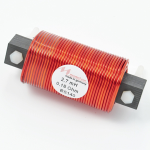
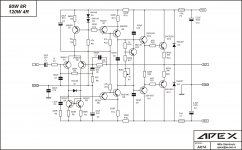
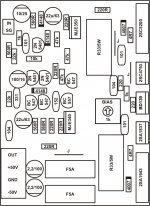
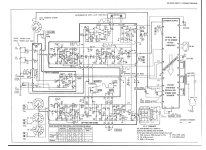

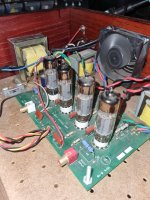
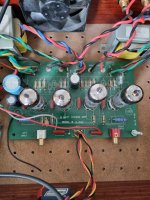
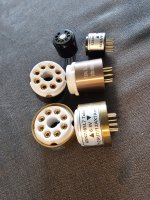
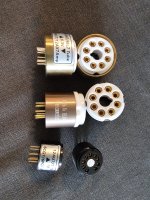
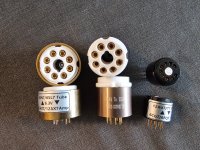

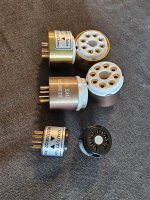
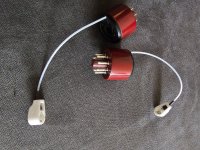
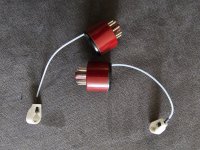
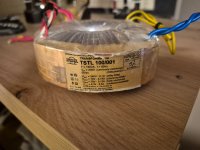

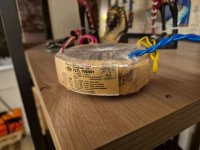
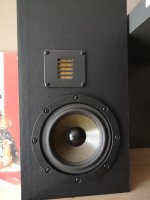
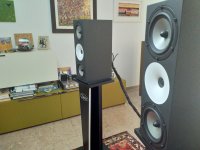
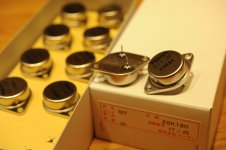

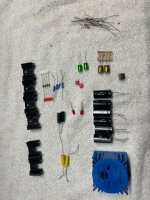
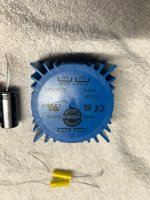
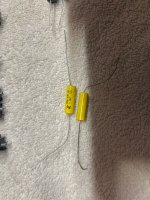
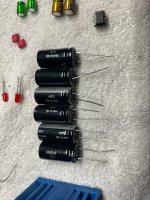
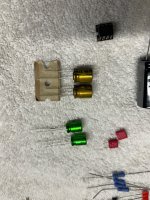
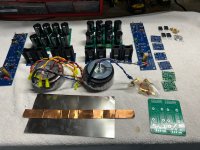
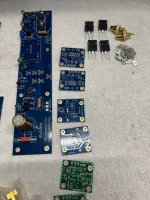
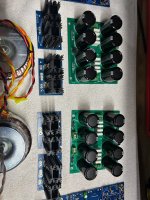
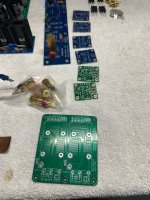
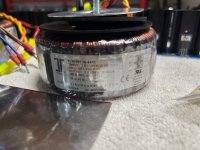
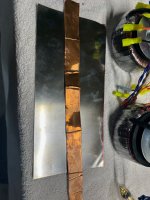


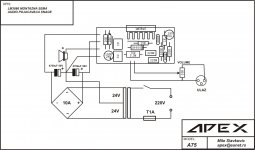
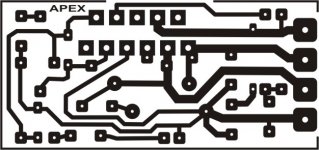
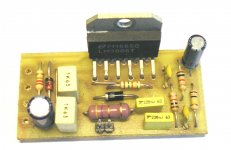
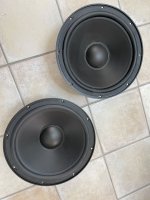
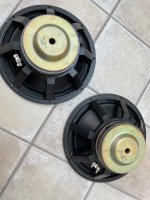

 I'm a professional studio vocalist & vocal producer/songwriter, and have gotten into effects pedal building in the past few years. Being a singer, my most recent and most ambitious project is a diy mic preamp, which I am excited to build from scratch (pcb design, enclosure design, building etc.)
I'm a professional studio vocalist & vocal producer/songwriter, and have gotten into effects pedal building in the past few years. Being a singer, my most recent and most ambitious project is a diy mic preamp, which I am excited to build from scratch (pcb design, enclosure design, building etc.) 